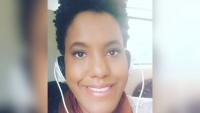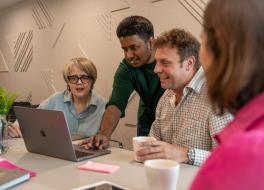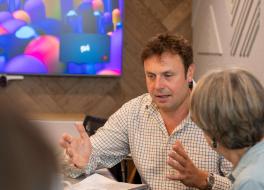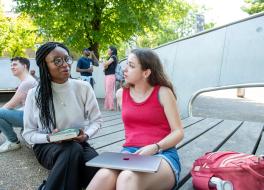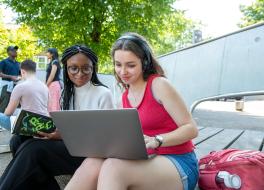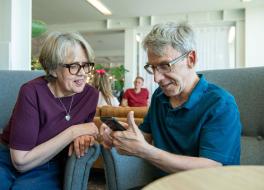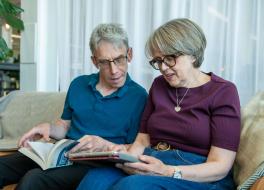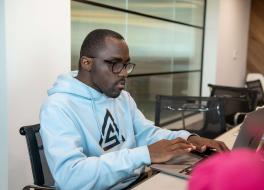To embody the word
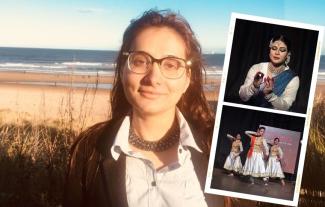
Botsa Katara tells us how an Indian dance form enabled her to express herself in new ways, and encourages us to think about using the body's potential to communicate.
The difference between the unspoken word, the word I wanted to speak and the word I could speak has been immensely wide for me. The compulsion to speak carried the painful questions of how to utter my words and whether to even speak or not.
But all this was soon to change when I was introduced to Kathak, an Indian dance form, and my stingy collection of words was soon to get rich with the help of dancing.
Embodying communication
Kathak enacts mythological folklores purely through the medium of detailed and crisp hand and foot work, with the help of music but no spoken words. Here, unlike in oral tradition, the stories are performed by the body.
When I started practising Kathak I began to first live the word in my body and then vocalise it at my own pace. This made me feel the physicality of the words and experience them in a personalised way, where I was able to meld my speech and body together. There is no particular way of vocalising; depending upon the situation, I just start to use my body. For example, when I talk I use my hands and shoulders a lot; that is, I gesticulate to a significant degree. There is no conscious practice of developing my gestures. I don't think about it either — it just happens spontaneously. Expressions like 'to give' or 'to grow' were gesticulated by the curling of my fingers, or the expansion of my hands through space, or by cupping my hands in a lotus shape.
I began to first live the word in my body and then vocalise it at my own pace. This made me feel the physicality of the words and experience them in a personalised way, where I was able to meld my speech and body together.
Without explicitly realising it, my body became the centre of my speech. I was able to channel my rigid stutter towards slower, smoother and more expressive gestured verbalisations, where my entire body — not only my mouth and hands — became a compulsory foundation for communication. The immense pressure previously exerted on my jaws, tongue and throat was released and evenly distributed across my entire body and the spaces I inhabited. I was not only expanding my boundaries but was also feeling freer and more at ease with my immediate spaces.
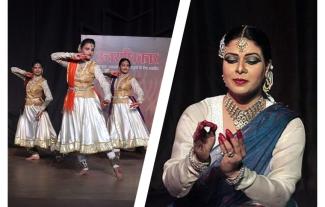
Primary communication
After five years of rigorous training in Kathak, my practised gesticulations became my primary medium of communication and I have been using it ever since. I move my body in every situation, since I talk through my hands. It's not like dancing, which requires a rhythm, music and beat, but more like exhaustive use of hands. The only thing that adapts or changes with every situation is the frequency of my gestures. For example, if I have a job interview my gesticulation increases, but when I'm with my friends my hand movements are more subtle and less pronounced. However, in either situation there is no practice or thought.
It usually goes unnoticed. However, some people pick up on my gesticulation but rather than finding it peculiar or amusing, they find it unconventionally and strikingly expressive.
Just being mindful of the potential of physical movements and gestures can help so many of us who stammer.
Although dancing opened me to the use of my body, I never explicitly use it to choreograph my speech. I would say it offered me the possibility of using everyday mundane hand gestures to foster my communication skills and smooth out my speech.
I do not always dance: sometimes I sit, read and gesticulate while at other times I go on long walks and speak out the consonants that cause me to stammer most. This is beneficial because it keeps me in touch with my changing speech patterns and helps me understand the right pace and rhythm for me to embody and speak out those sounds.
Kinetic potential
The therapeutic potential of maximising our gestures is seldom discussed in literature on speech therapy, although there is plentiful evidence of its efficacy in theories of body language. This should not be hard to believe, since spoken language also needs space to convey its sound patterns.
I want to note that in sharing my experience I am neither preaching nor prescribing a cure or radical breakthrough, but only trying to open a gate for the inclusion of kinetics, expressed through gestures and the body, into the wider context that typifies the mouth as the sole bearer of speech. This piece is an expression of approaching speaking and speech in a more personalised and embodied way.
Ultimately, my experience of engaging my body while speaking must not be taken as a privileged journey exclusively helpful to dancers and the able-bodied. The awareness I really hope to show is that we can use our body to vocalise our words without even taking up dancing. Just being mindful of the potential of physical movements and gestures can help so many of us who stammer.
I want to end by highlighting a sub-Saharan African language that uses drumbeats and movements of the drummer to communicate messages. It is not the sound patterns that are mimicked to produce meanings; instead communication centres upon the listener's attempt to live inside the body of the drummer and experience their experience. Clearly, there is a 'bodying-forth' of meanings. Fascinatingly enough, it makes us wonder if word is really flesh? Perhaps so!
Would you like to tell us about something that's helped you? See Submit Something For The Site or email editor@stamma.org to find out how you can write an article too.


